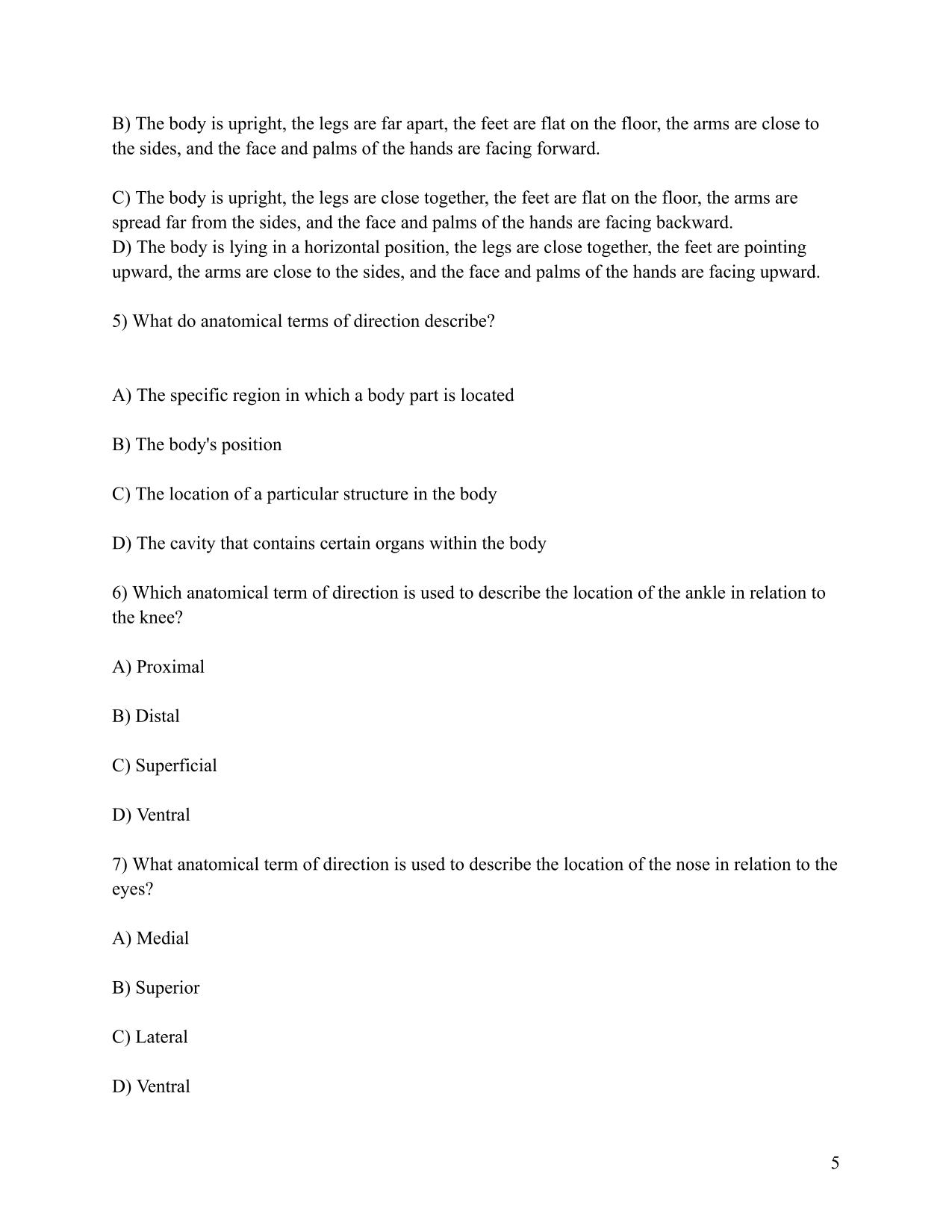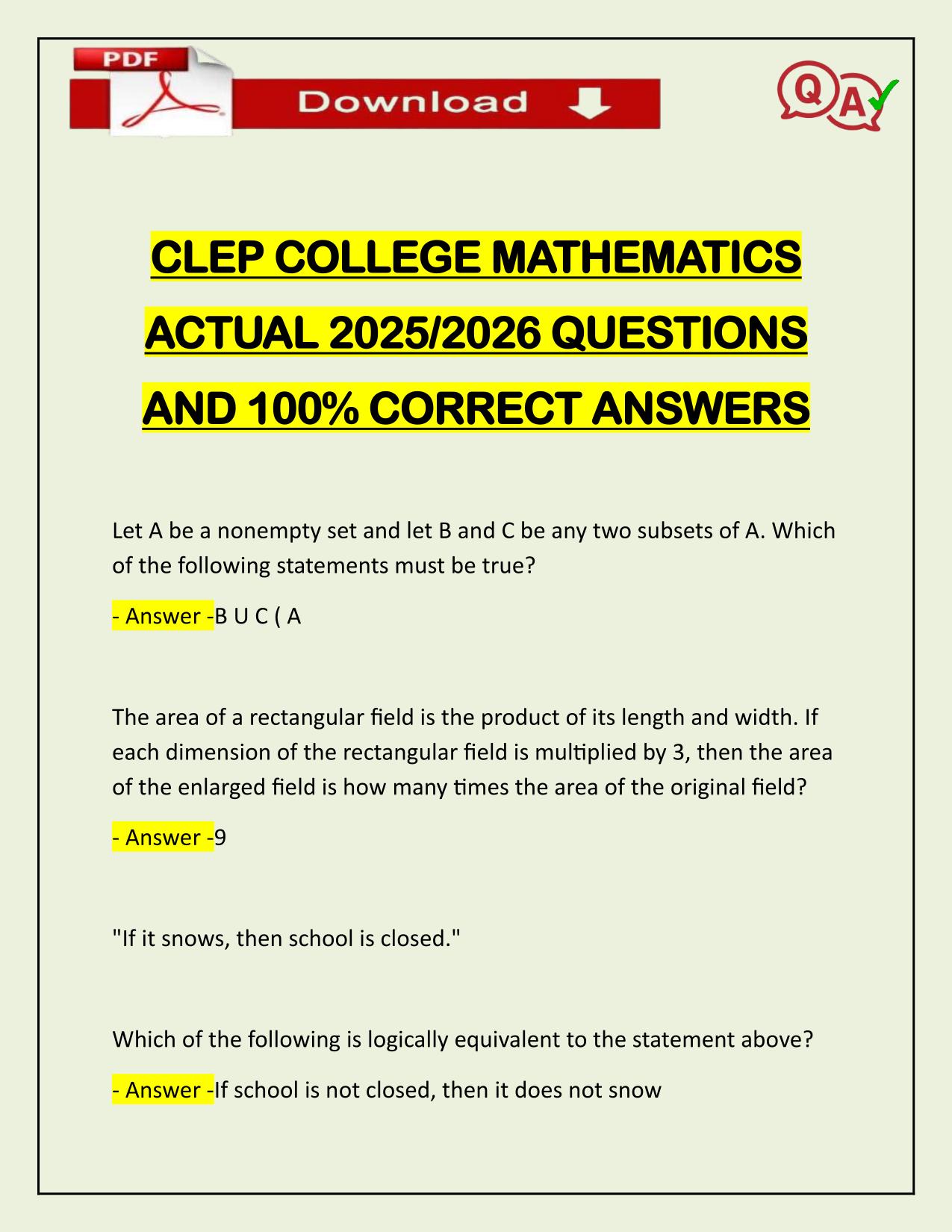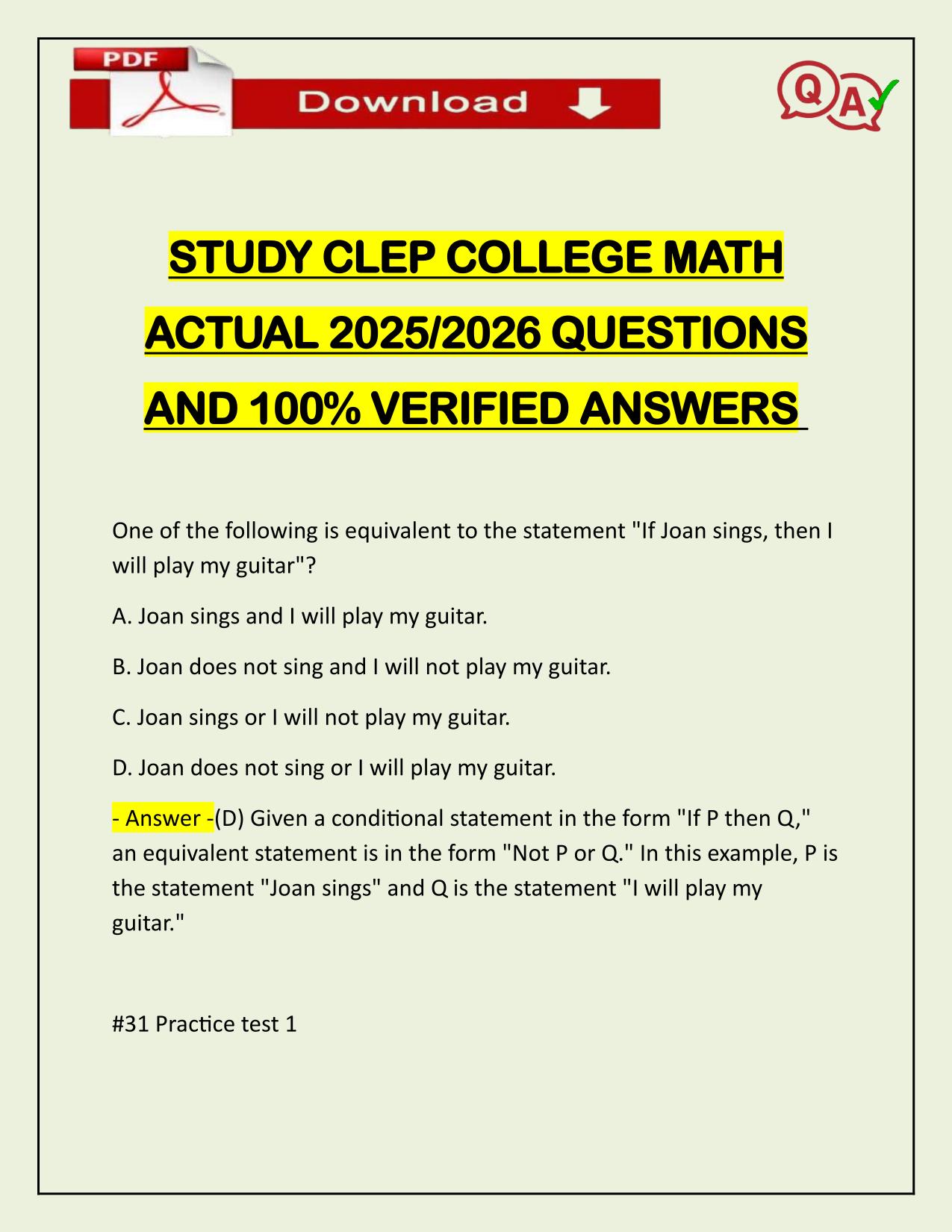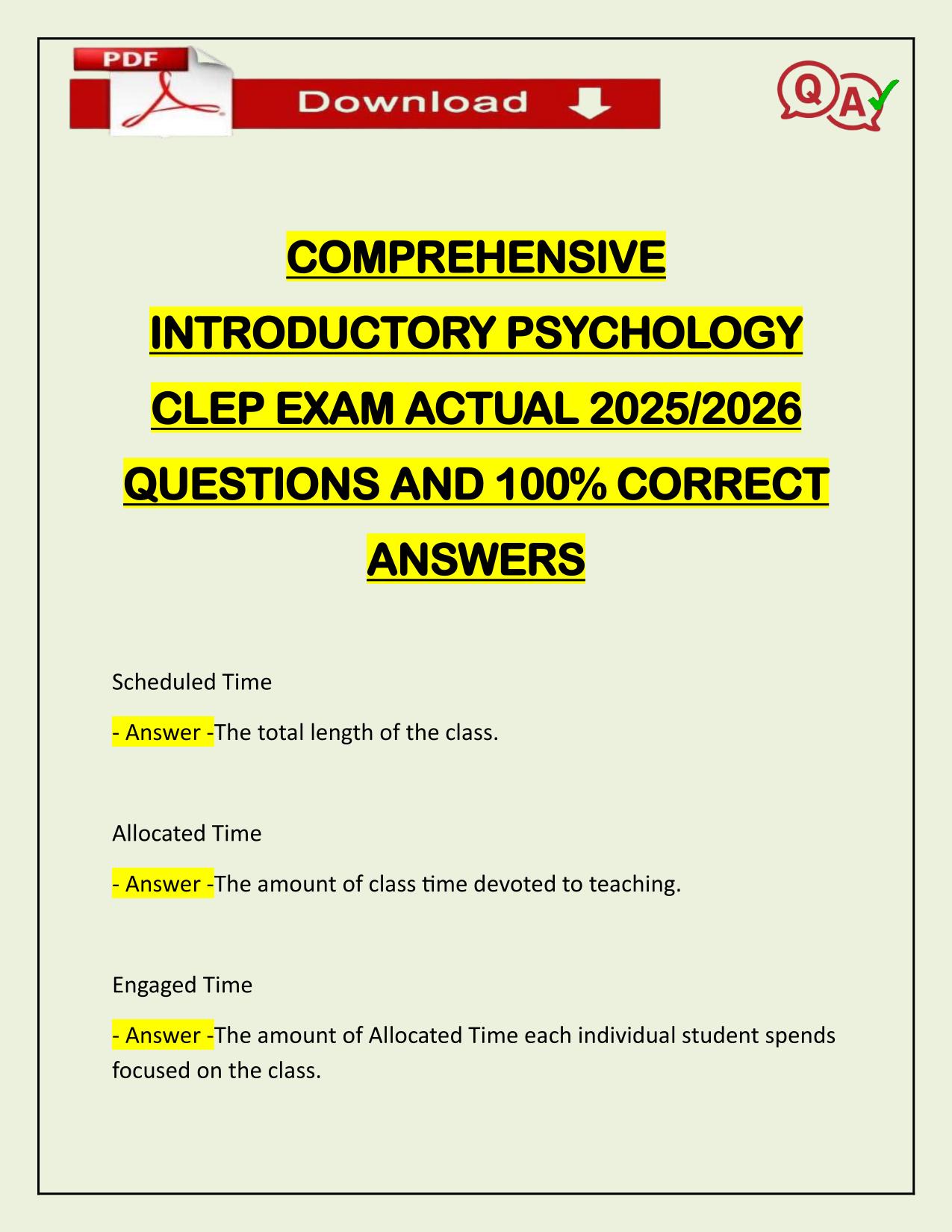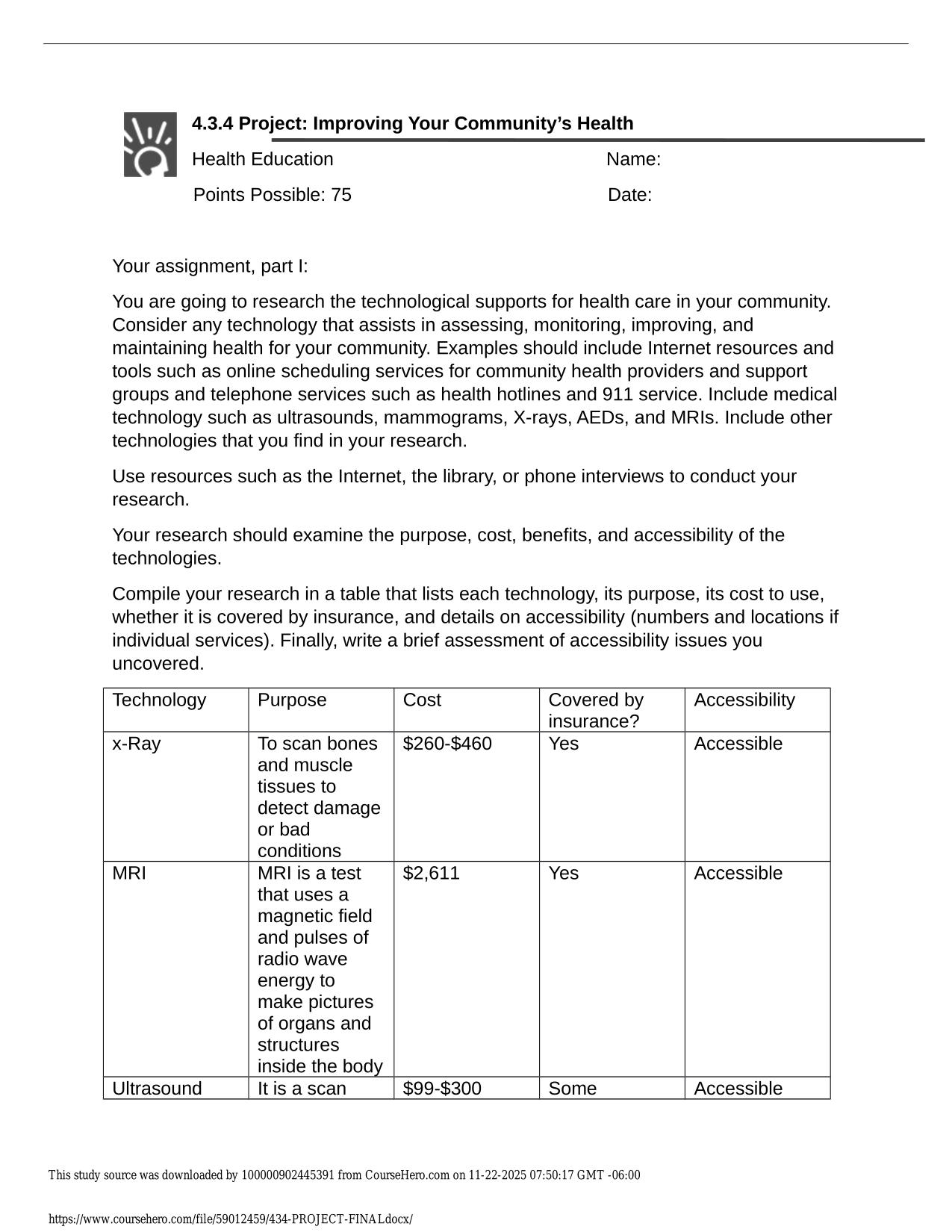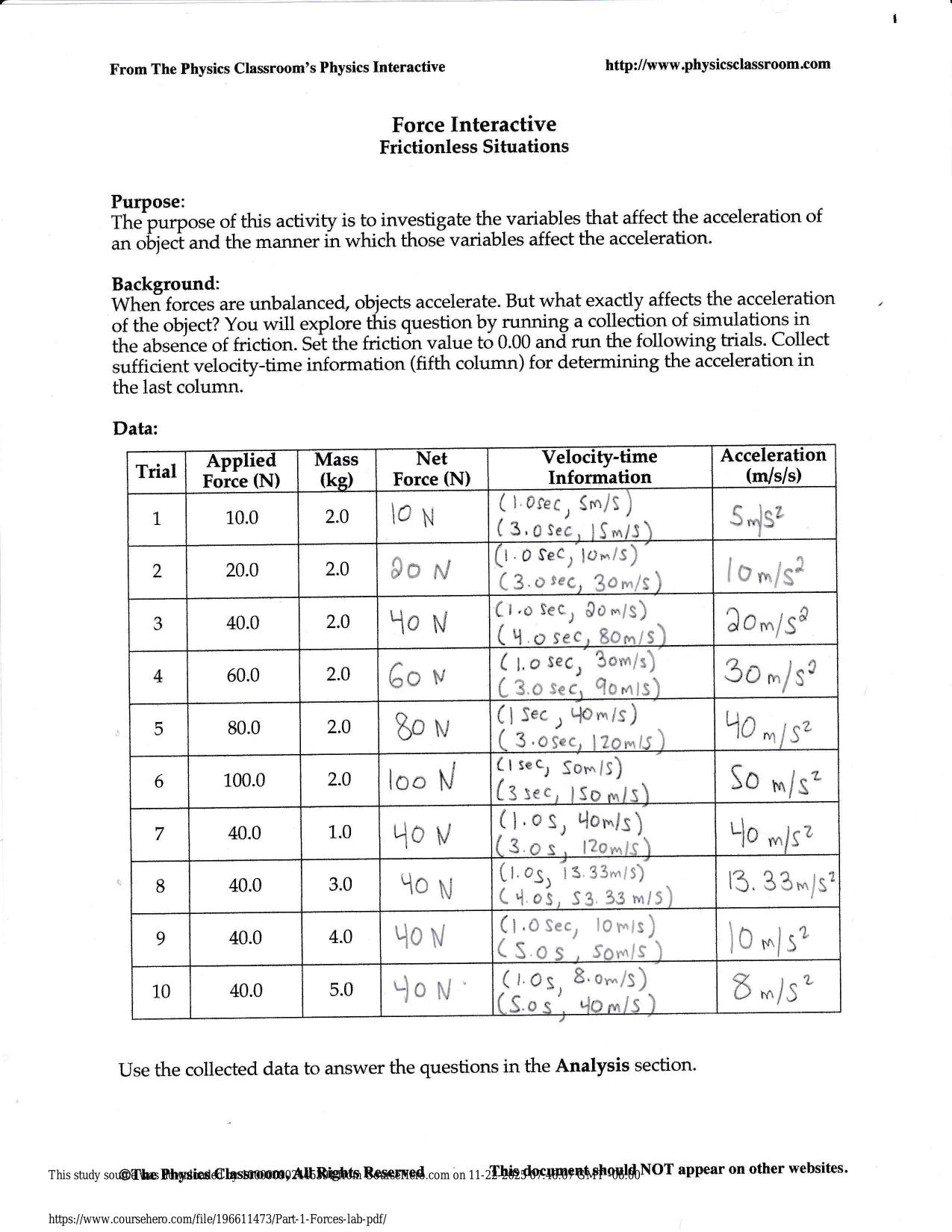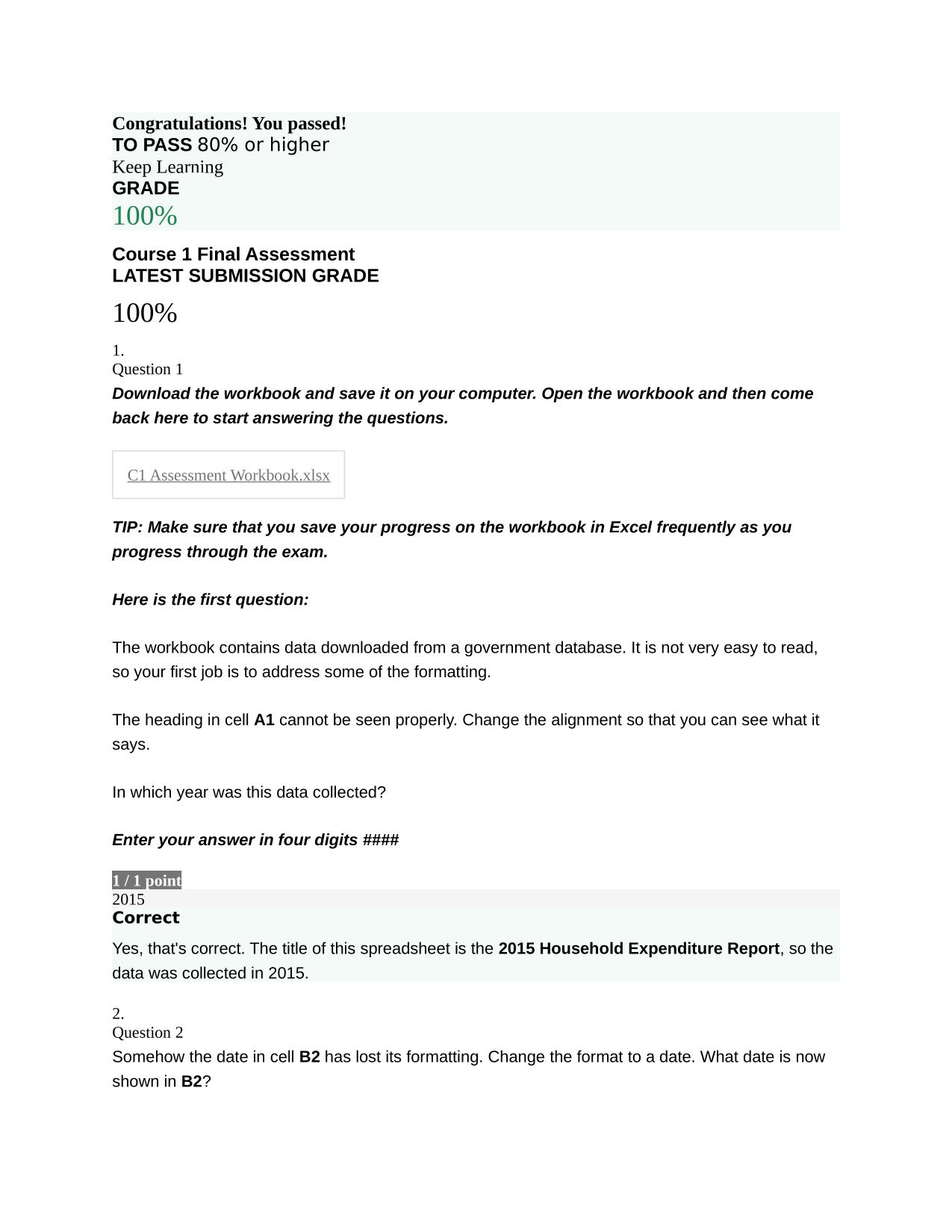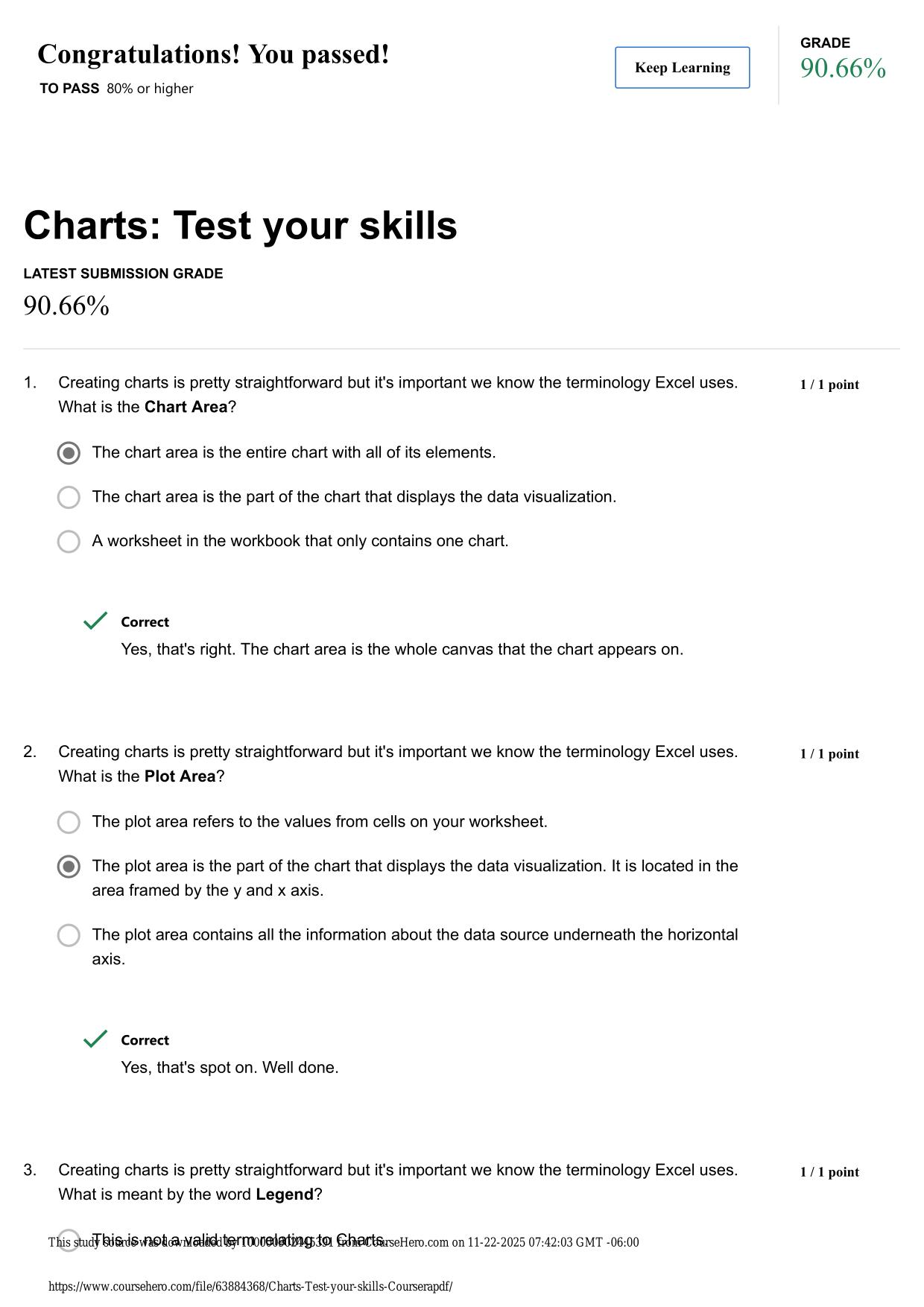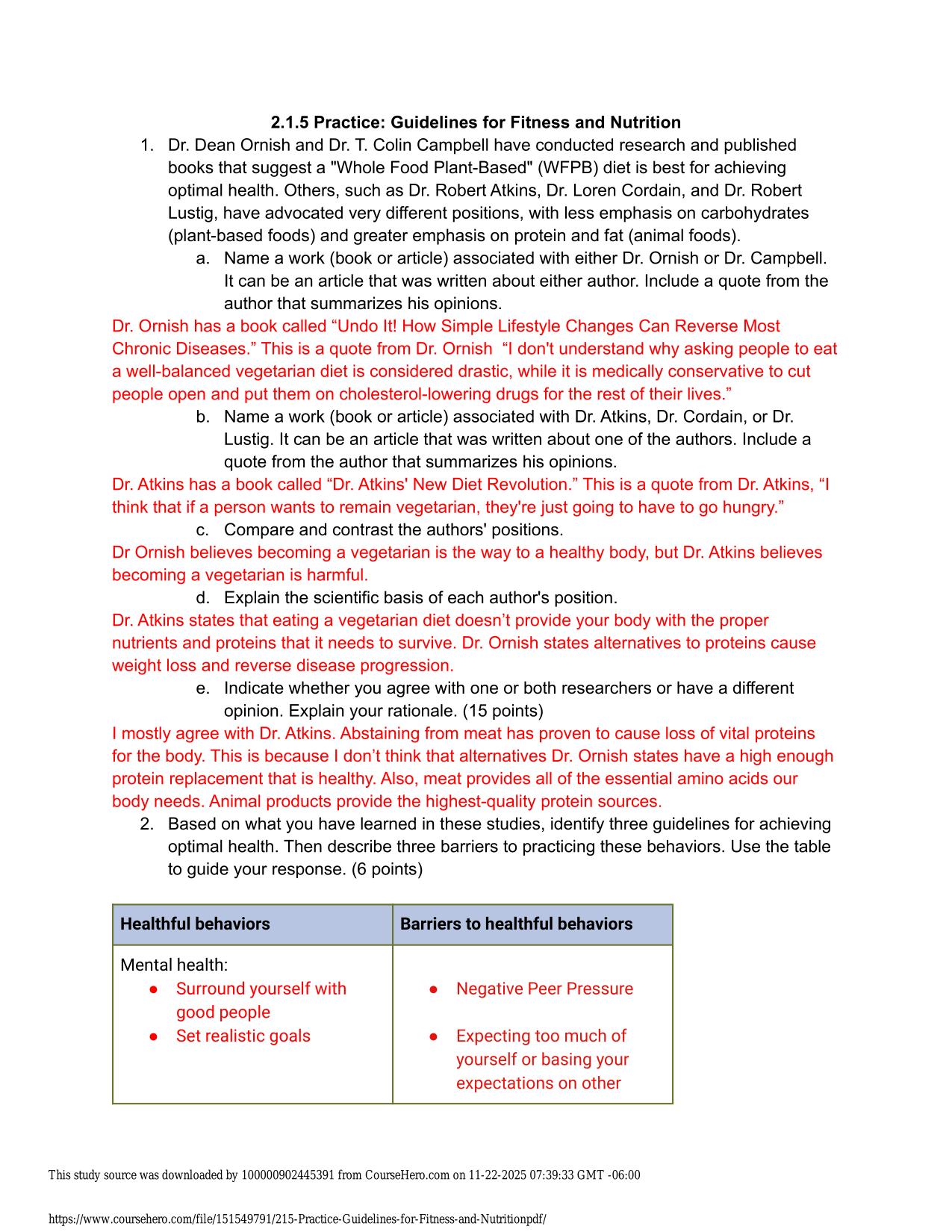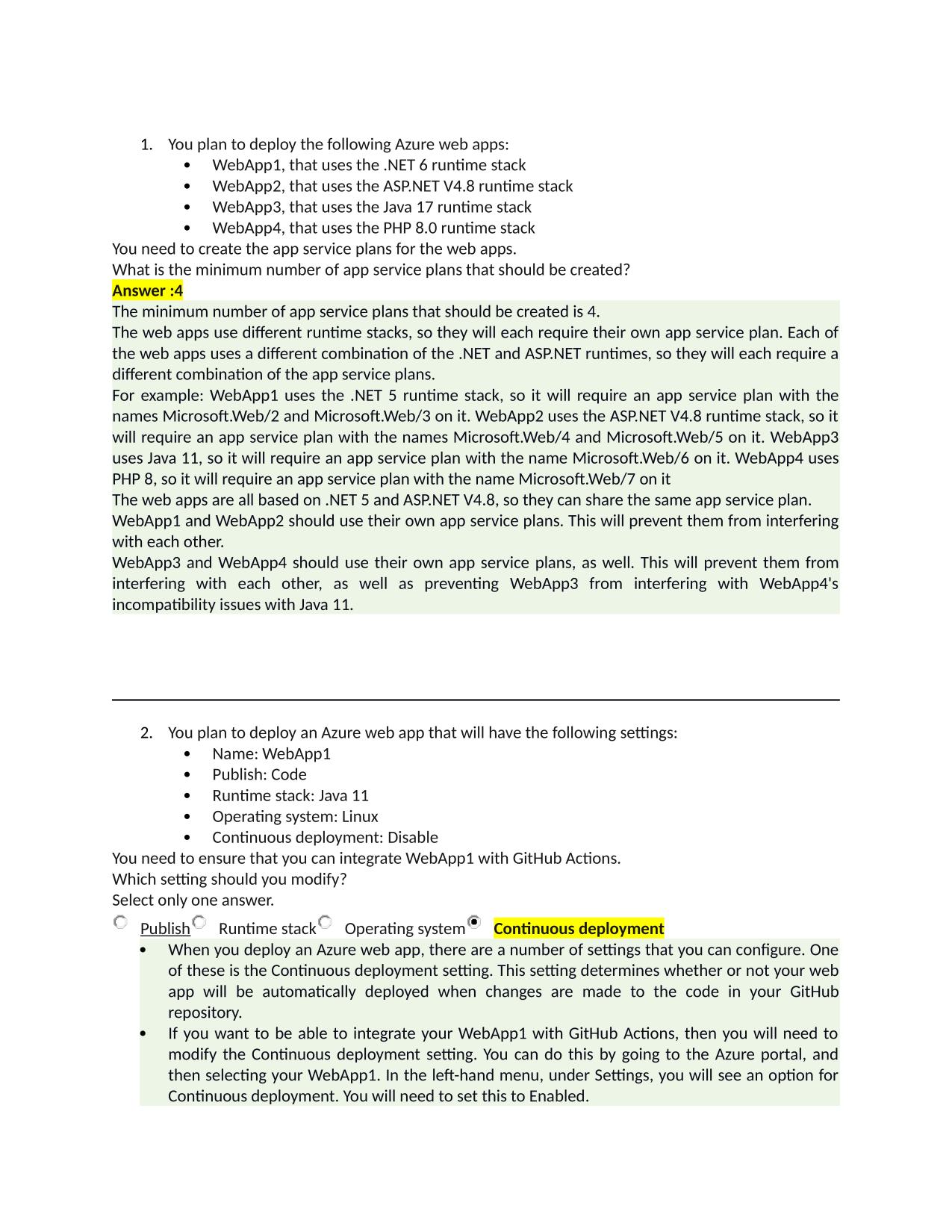Test Bank for Anatomy, Physiology and Disease 3rd Edition by Deborah Roiger All Chapters ISBN: 9781265135744
Course:
Anatomy and Physiology
Institution:
Anatomy and Physiology
Test Bank for Anatomy, Physiology and Disease 3rd Edition by Deborah Roiger All Chapters ISBN: 9781265135744
After purchase, you get:
✅ Instant PDF Download
✅ Verified answer explanations
✅ Refund if not Satisfied
✅ Prepared for 2025/2026 test cycle
Overview
By walking through complex concepts step-by-step, this resource helps learners build mastery in Anatomy and Physiology. Difficult topics become understandable when they're broken down into logical, sequential steps. Students frequently have those satisfying "aha moments" with material that previously seemed confusing or impenetrable. The methodical approach ensures you're building a solid foundation rather than just skimming the surface of important concepts.
Who Is This For?
Created for exam takers seeking maximum exposure to typical Testbank questions, rationales, and scenarios. People often use it to test their readiness before the actual exam. The all-inclusive coverage ensures thorough preparation.
Related Keywords
Detailed Study Description
Frequently Asked Questions
Document Information
| Uploaded on: | November 1, 2025 |
| Last updated: | November 17, 2025 |
| Number of pages: | 214 |
| Written in: | 2025/2026 |
| Type: | Exam (elaborations) |
| Contains: | Questions & Answers |
| Tags: | Test Bank for Anatomy, Physiology and Disease 3rd Edition by Deborah Roiger All Chapters ISBN: 9781265135744 |
Seller Information

AdelineJean
User Reviews (0)
Exam (Elaborations)
$16.50
Add to Cart
100% satisfaction guarantee
Refund Upon dissatisfaction
Immediately available after purchase
Available in Both online and PDF
$16.50
| 0 sold
Discover More resources
Inside The Document
Test Bank for Anatomy, Physiology, & Disease, 3rd Edition by Deborah Roiger All Chapters Chapter 1: The Basics Answers are at the end of each chapter 1. Anatomy is defined as the study of __________. A) atoms B) body structures C) how the body functions D) how the body malfunctions 2) Physiology is defined as the study of . A) physics B) body structures C) how the body functions D) how the body malfunctions querysmt b@g mail.com 3) Anatomy and physiology are defined as the study of . A) the normal and abnormal function of the body B) body structures C) how the body functions D) the body's structure and how those structures function 4) What is considered standard anatomical position? A) The body is upright, the legs are close together, the feet are flat on the floor, the arms are close to the sides, and the face and palms of the hands are facing forward. 4 B) The body is upright, the legs are far apart, the feet are flat on the floor, the arms are close to the sides, and the face and palms of the hands are facing forward. C) The body is upright, the legs are close together, the feet are flat on the floor, the arms are spread far from the sides, and the face and palms of the hands are facing backward. D) The body is lying in a horizontal position, the legs are close together, the feet are pointing upward, the arms are close to the sides, and the face and palms of the hands are facing upward. 5) What do anatomical terms of direction describe? A) The specific region in which a body part is located B) The body's position C) The location of a particular structure in the body D) The cavity that contains certain organs within the body 6) Which anatomical term of direction is used to describe the location of the ankle in relation to the knee? A) Proximal B) Distal C) Superficial D) Ventral 7) What anatomical term of direction is used to describe the location of the nose in relation to the eyes? A) Medial B) Superior C) Lateral D) Ventral 5 8) What are the two major anatomical regions of the body? A) Axial and abdominal B) Appendicular and cephalic C) Axial and appendicular D) Cephalic and thoracic 9) If a person sustained cervical dislocation in an accident, what region of his/her body was affected? A) Head B) Neck C) Chest D) Face 10) What are the two different ways the abdominal region of the body can be divided? A) The abdominal region can be divided into 4 quadrants or 2 regions. B) The abdominal region can be divided into 4 regions or 6 quadrants. C) The abdominal region can be divided into 4 quadrants or 9 regions. D) The abdominal region can only be divided into 4 regions. 11) Which of the following organs is located in the right upper quadrant of the abdomen? A) Heart B) Lungs C) Left kidney 6 D) Liver 12) Carpal tunnel syndrome is a condition that affects what region of the body? A) Foot B) Arm C) Leg D) Wrist 13) Which of the following anatomical terms of direction refer to the dorsal side of the body? A) Posterior B) Anterior C) Superior D) Inferior 14) Where is the diaphragm in relation to the lungs? A) Superficial B) Deep C) Superior D) Inferior 15) All of the following describe an anatomical region except which one? A) Axial B) Cubital C) Bilateral 7
CourseHero & Studypool Unlocks
Get Unlocked CourseHero and Studypool documents files instantly to your email, simply by pasting your link and clicking "Unlock Now". Learn more on how to unlock here.

